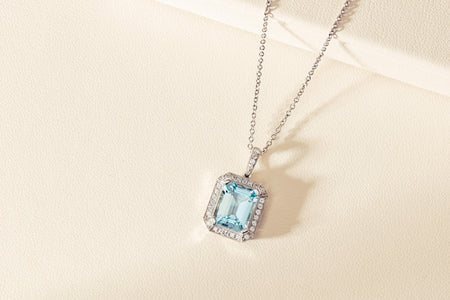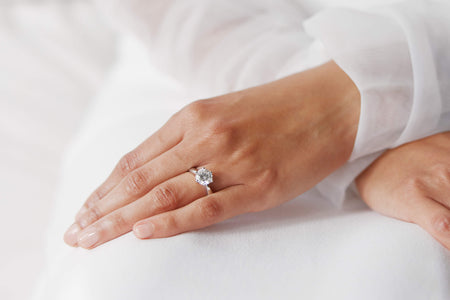Your Guide to Metals
-
 White Gold
White Gold -
 Yellow Gold
Yellow Gold -
 Rose Gold
Rose Gold -
 Platinum
Platinum -
 Sterling Silver
Sterling Silver -
 Gold Plated
Gold Plated -
 Gold Vermeil
Gold Vermeil
White Gold
In its purest form (24ct), gold is yellow in colour and too malleable to be suitable for most jewellery. To give pure gold the properties required to make fine jewellery, other metals are added, which creates a gold alloy. The purity of gold in the material is represented by the carat, for example, 18ct gold is 75% pure gold and 25% other metals.
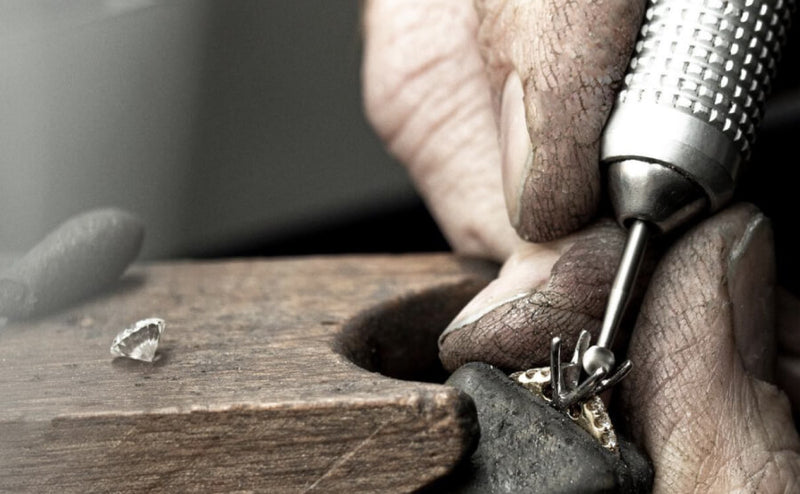
Creating an alloy
When creating white gold, white coloured metals are mixed with pure gold to create an alloy. The alloy colour will vary from slightly off white through to a subtle yellow depending on the choice and concentration of metals used. Rhodium plating is then used to give a whiter, brighter finish. Over time, particularly on rings and bracelets, this plating will wear off revealing the base colour of the alloy underneath. Different white gold alloys may look the same when new, but with normal wear, the true colouring underneath will be revealed. A more yellow coloured alloy will require more regular maintenance to restore its original appearance.
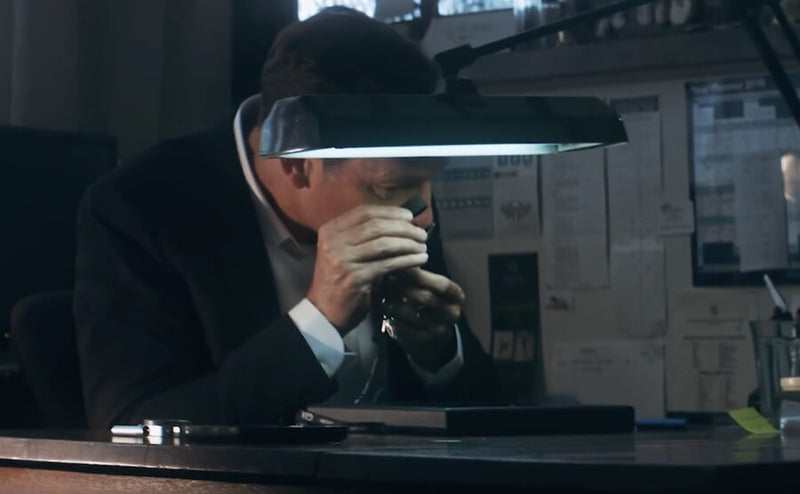
Palladium mixed with pure gold
Palladium is the premium metal for mixing with pure gold to make white gold as it gives a whiter base colour, a better lustre, and it is hypoallergenic. The cheaper and common alternative to palladium is nickel. When used as an alloy in white gold, nickel will result in an inferior base colour and lustre, and it can cause an allergic reaction in as many as one out of eight people.
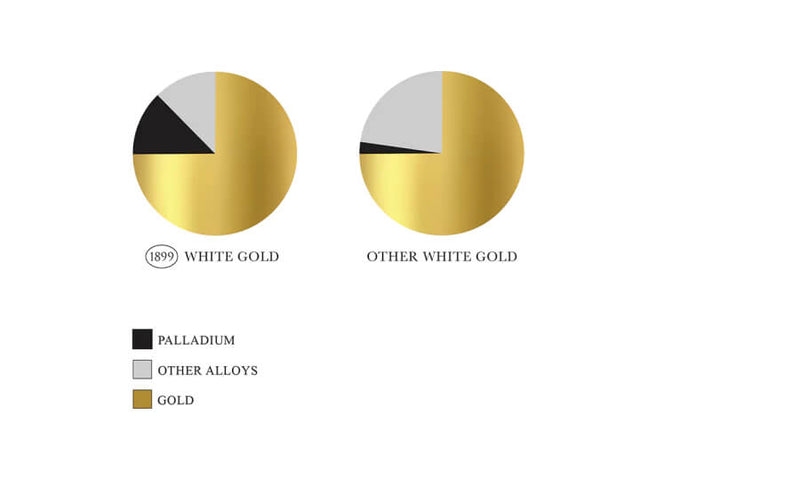
1899 White Gold Comparison
Palladium is the premium metal for mixing with pure gold to make white gold as it gives a whiter base colour, a better lustre, and it is hypoallergenic. The cheaper and common alternative to palladium is nickel. When used as an alloy in white gold, nickel will result in an inferior base colour and lustre, and it can cause an allergic reaction in as many as one out of eight people.
Yellow Gold
Gold in its purest form is very soft, for this reason when used in jewellery, it is often mixed with other metals. As a greater proportion of other metals is added to gold, the lower the carat, 9ct for example, and the more hard wearing the gold becomes. As such, the higher the carat, 18ct for example, the more care that needs to be taken with the jewellery.
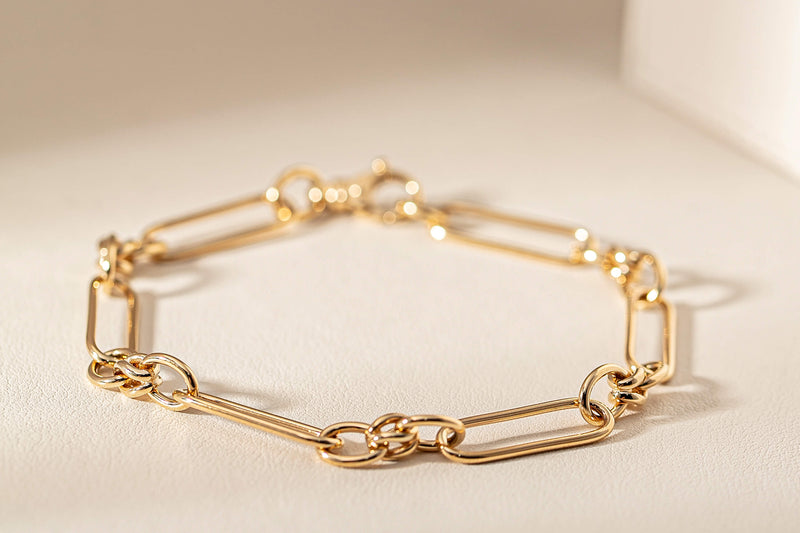
As with all jewellery, rings and bracelets will encounter the most wear due to where they are worn, so these will require the most care.
Gold is a relatively soft metal and damaging the setting can compromise the safety of the stones. If you are concerned about the setting or stones in your jewellery, feel free to bring it into a Walker & Hall store for an assessment.
Rose Gold
Gold in its purest form is very soft, for this reason when used in jewellery, it is often mixed with other metals. As a greater proportion of other metals is added to gold, the lower the carat, 9ct for example, and the more hard wearing the gold becomes. As such, the higher the carat, 18ct for example, the more care that needs to be taken with the jewellery.
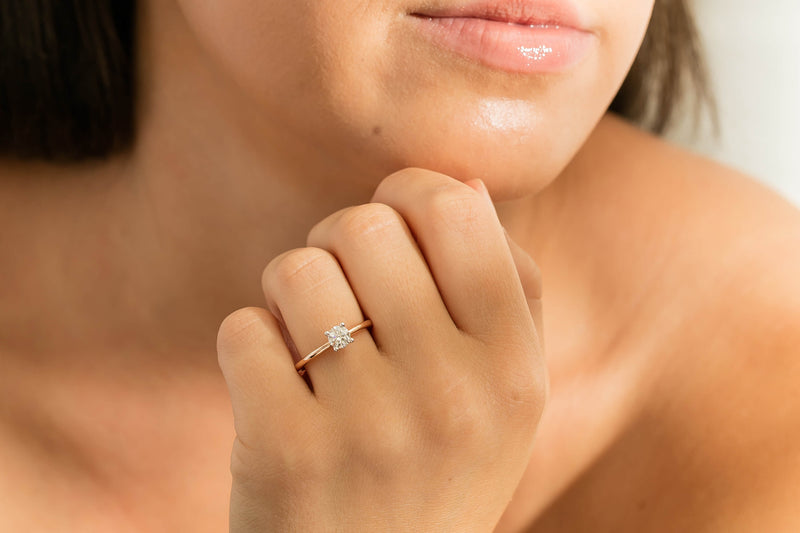
As with all jewellery, rings and bracelets will encounter the most wear due to where they are worn, so these will require the most care.
Gold is a relatively soft metal and damaging the setting can compromise the safety of the stones. If you are concerned about the setting or stones in your jewellery, feel free to bring it into a Walker & Hall store for an assessment.
Platinum
Not only is platinum more expensive than gold but in jewellery, it is also used in higher purity, normally 95%. This high level of purity gives platinum hypoallergenic properties.

Platinum is also a very hard metal, for this reason you might presume it would maintain its shine, this is however not the case. All metals will scratch and because of platinum’s hardness it will tend to maintain its scratches. This gives platinum a duller natural state of wear than softer metals such as gold and silver. For this reason platinum will need to be polished more regularly and will occasionally need an emery polish to remove the deeper scratches, this may need to be done every 6 -9 months. As mentioned earlier this applies primarily to rings and bracelets which receive the most wear.
Sterling Silver
Sterling Silver is the most widely used metal in jewellery; it is typically of 92.5% purity which is also known as sterling silver.
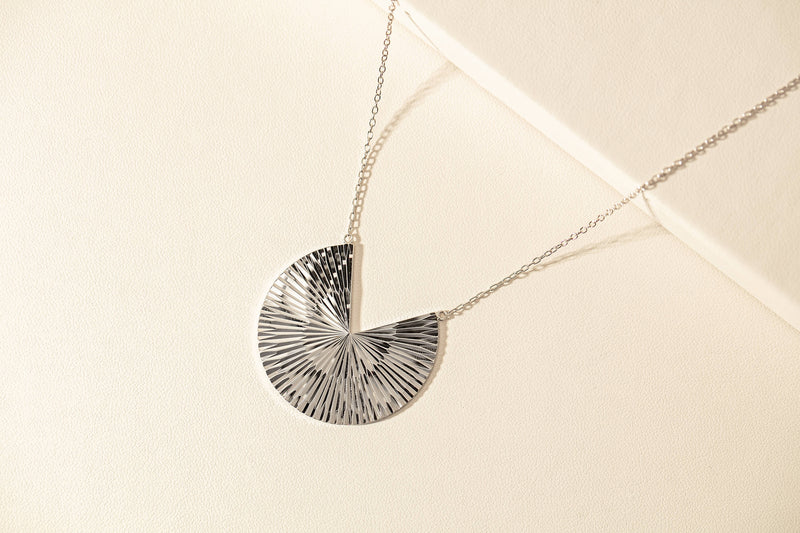
Sterling silver is a relatively soft metal and as such can be misshapen relatively easily, for this reason rings and bracelets should be removed when undertaking physical activity.
All silver oxidizes causing tarnishing when it comes in contact with certain chemicals, it is particularly important to avoid minerals associated with thermal hot springs and chlorinated water as they can cause severe tarnishing. As with all jewellery, apply hair spray and perfume before wearing your jewellery.
Gold Plated
Gold plated jewellery is often sterling silver jewellery that has been plated in a thin layer of yellow gold.
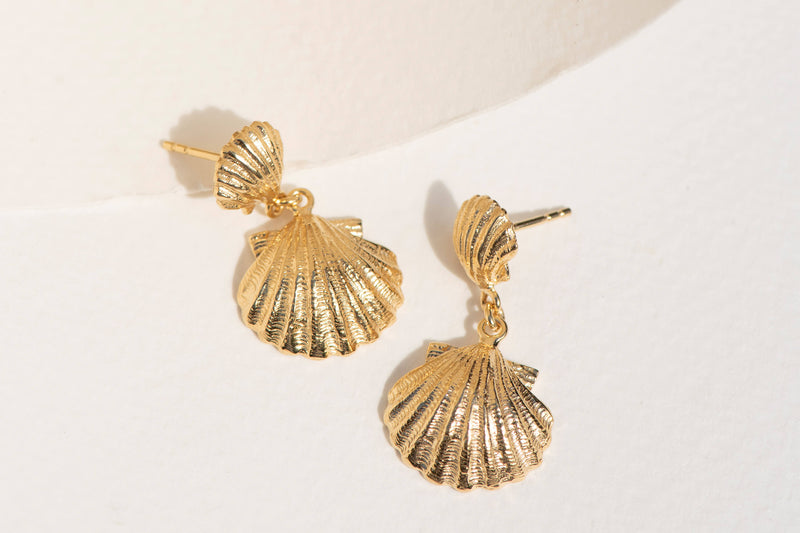
Gold plating can wear off over time and we recommend cleaning your gold plated jewellery with a soft cloth or gentle dishwashing liquid and warm water and avoiding abrasives. Avoiding contact with chlorinated water and other chemicals and allowing cosmetics and perfumes to dry before putting on your jewellery, will help to prolong the the appearance of the plating.
The plating on gold plated rings will typically wear faster than on gold plated earrings or necklaces, due to where the item is worn on the body and the surfaces the jewellery encounters during wear.
Gold Vermeil
Gold Vermeil refers to gold plating over pure 925 sterling silver. Unlike traditional gold plating, gold vermeil is plated with a minimum of 2.5 microns of gold, approximately five times thicker than standard gold plating.
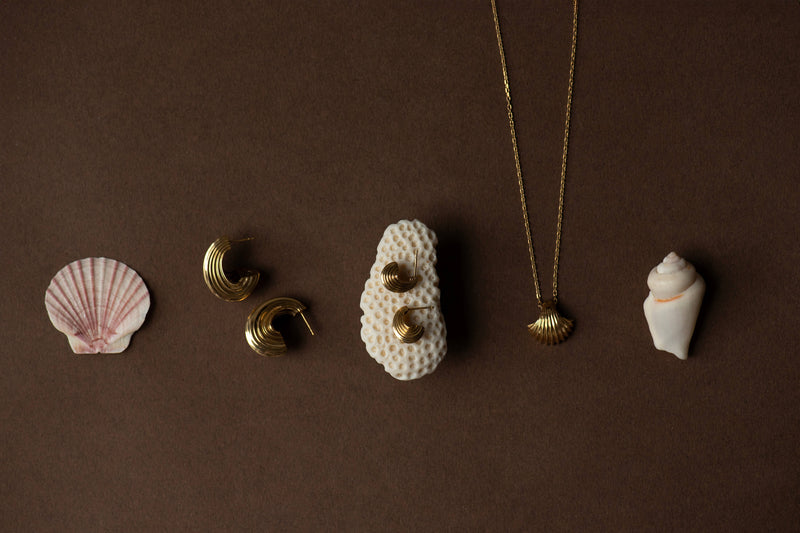
We recommend cleaning your gold vermeil jewellery with a soft cloth or gentle dishwashing liquid and warm water and avoiding abrasives. Avoiding contact with chlorinated water and other chemicals and allowing cosmetics and perfumes to dry before putting on your jewellery, will help to prolong the the appearance of the plating.


















